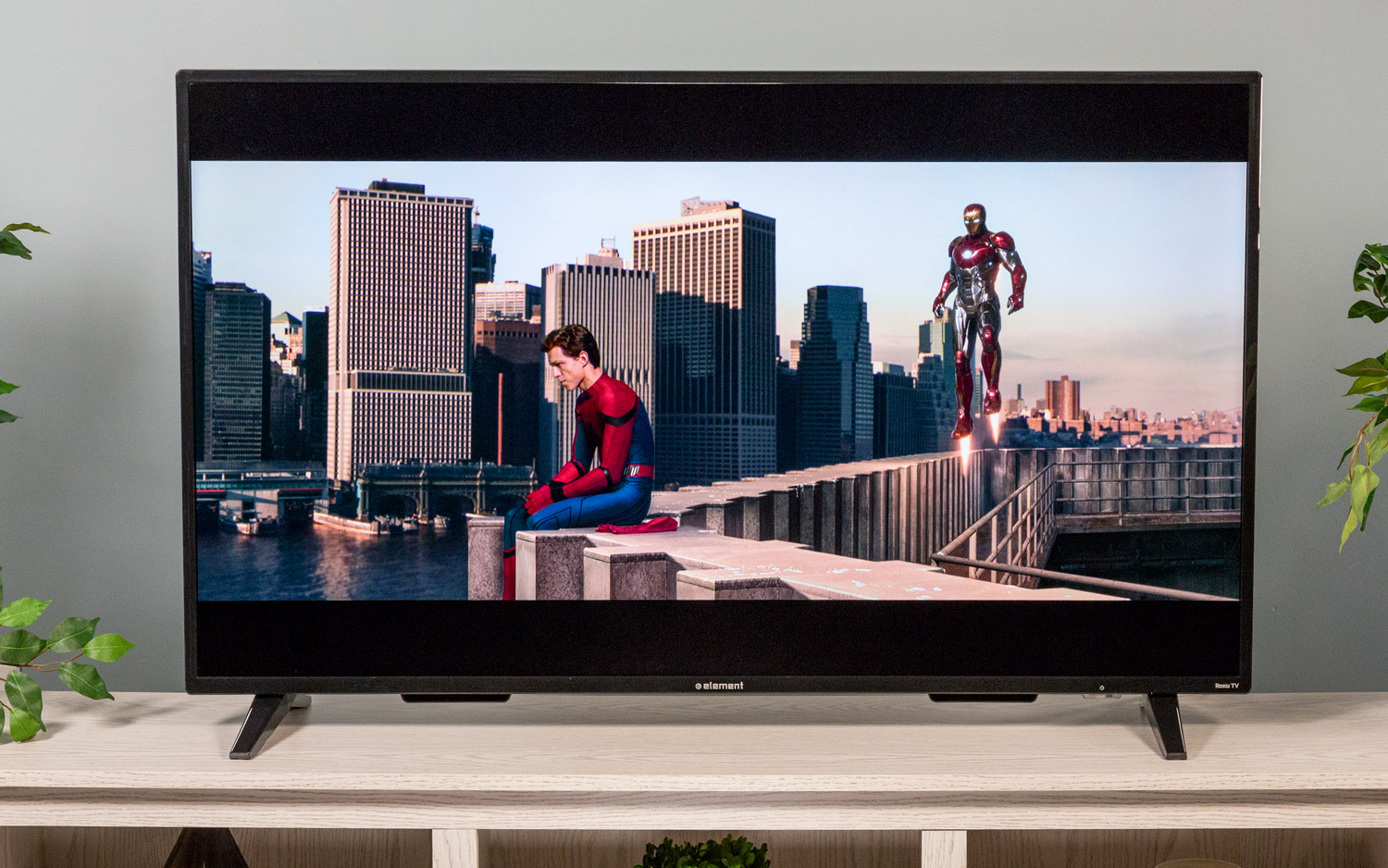Tom's Guide Verdict
The Element 55-inch Roku TV is an inexpensive option for anyone looking to upgrade to a smart 4K TV, but it’s a basic model that skips some of the finer features.
Pros
- +
Excellent price
- +
Offers 4K picture and HDR support
- +
Solid Roku TV for smart functions
Cons
- -
Very basic feature set
- -
Limited HDR support
- -
Middling picture quality
- -
Disappointing audio
Why you can trust Tom's Guide
The Element 55-inch Roku TV ($388) is the sort of product you might be wary of. You'll have seen it in Walmart with a suspiciously affordable price, and you probably asked yourself whether such an inexpensive smart TV can be any good. The good news is that the Element 55-inch Roku TV can be pretty good, so long as you accept basic functionality and a less generous feature set than most of the best TVs might offer. If you're waiting for a good opportunity to ditch your 1080p dumb TV, this isn't a bad option.
Element 55-inch Roku TV Specs
| Price | $388 |
| Screen Size | 55 inches |
| Resolution | 3840 x 2160 |
| HDR | HDR10 |
| Refresh Rate | 60Hz |
| Ports | 3 HDMI, 2 USB |
| Audio | 2 Channel, with Dolby Digital Sound |
| Smart TV Software | Roku TV |
| Size | 48.8 x 28 x 3.5 inches [w/o stand] |
| Weight | 47.7 pounds [w/o stand] |
Design
The Element Roku TV has a very basic design, with plastic construction. The bezel around the display has a glossy black finish, as do the included plastic feet of the stand. It won't wow you with its sophistication, but that's hardly a deciding factor on a sub-$400 4K TV.
The Element TV measures 48.8 x 28 x 3.5 inches, and weighs 47.7 pounds fully assembled. On the lower right edge of the TV chassis is a power button and an IR sensor for the remote.
- The 55 best shows on Netflix
Protruding below the bottom of the screen are two speaker grills with built-in reflectors, that redirect the sound from the downward-facing speakers toward the audience in front of the TV.
Ports
On the left side of the Element TV are two HDMI ports and one USB port as well as a headphone jack.
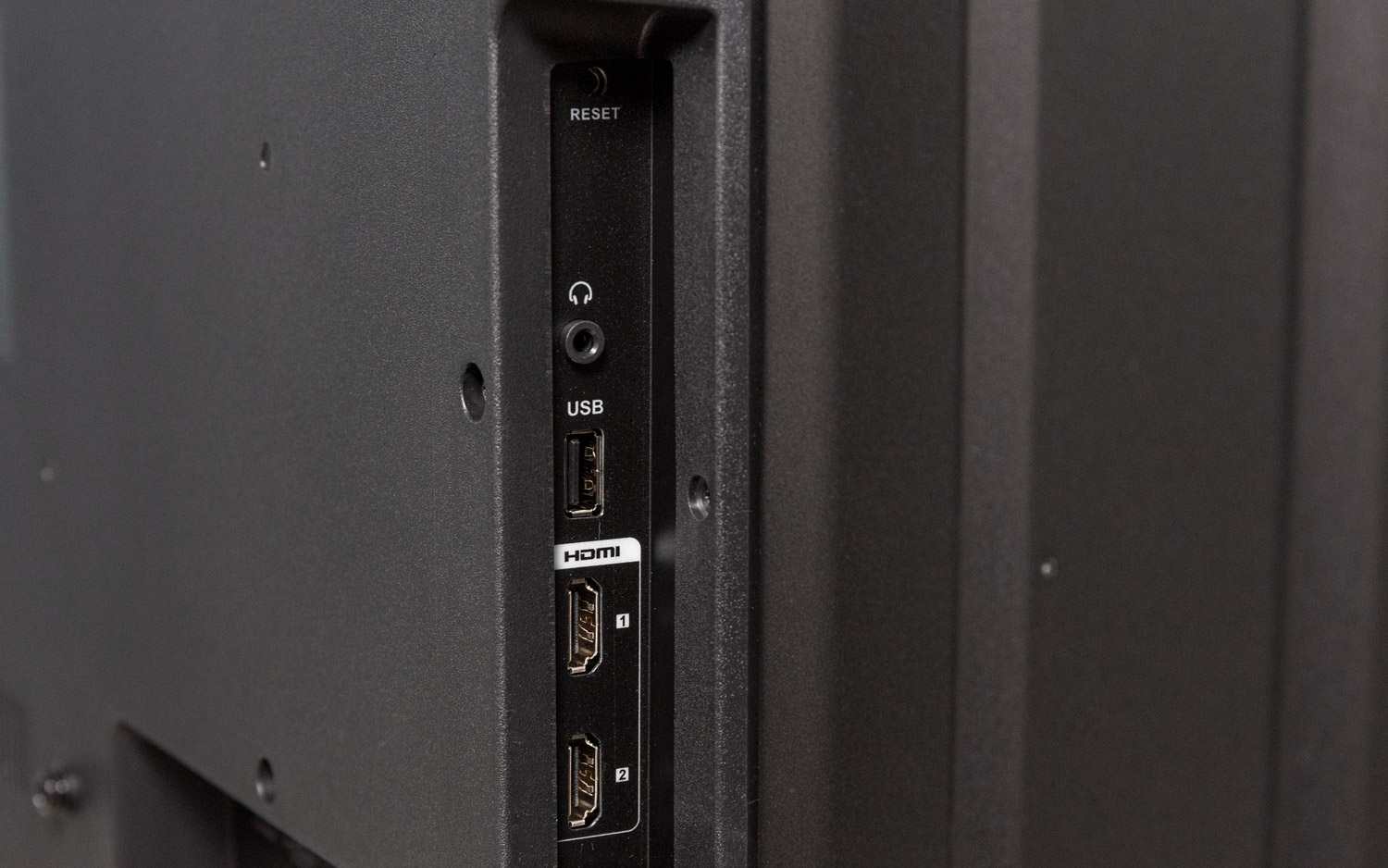
On the rear-facing connector panel is a third HDMI port (with ARC support), composite video input, an optical digital audio port and an RF connector for coaxial connections like a TV antenna.
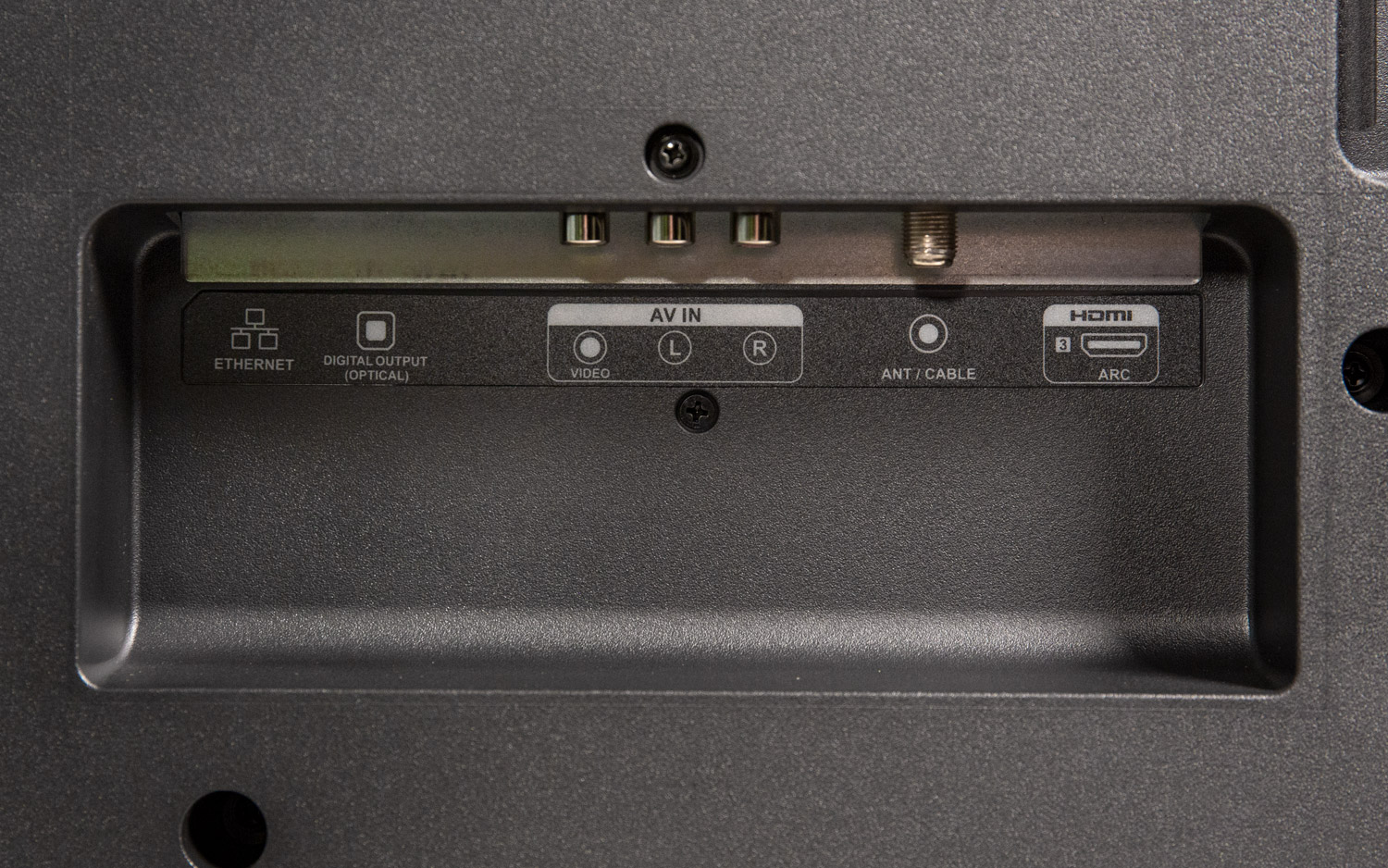
An Ethernet port is available for wired Internet, but the TV also has Wi-Fi built-in.
Performance
The Element Roku TV has a 55-inch LCD panel, with a 60Hz refresh rate. As with the exterior design, the specs aren't top of the line, but they tick the right boxes: 4K resolution, basic HDR support and a decent refresh rate. There are some corners cut – you won't get Dolby Vision support or backlight with precision dimming – but when we watched Blade Runner 2049 and Spider-Man: Homecoming to test its capabilities, we were still able to enjoy the films.
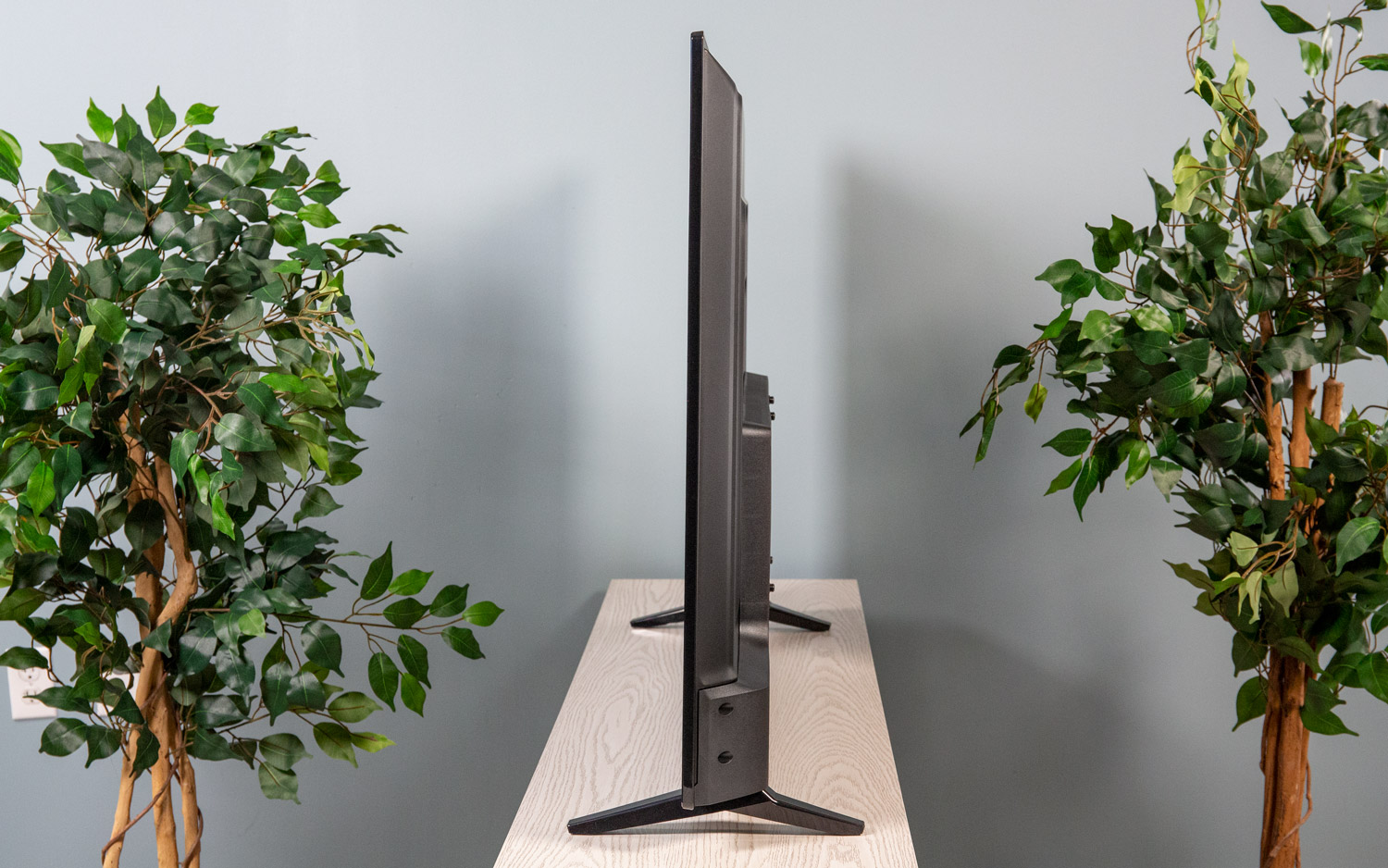
The edge-lit backlight isn't the worst we've seen, but you will still be left with shadows in the corners of the screen and some inconsistent illumination of the display. When displaying high-contrast scenes, entire swaths of the screen were lit with unwanted halos, the results of undifferentiated backlighting. When viewing scenes from Blade Runner 2049, the sunlit windows of a dark farmhouse not only sent shafts of light through the scene – the intended imagery – but they also were surrounded with an unnatural glow that spilled over into portions of the screen that should have been inky black.
Support for high dynamic range content is minimal, with only the HDR10 standard supported by the set. This did enhance some scenes when tested with Spider-Man: Homecoming. When we viewed a scene set in a shadowy workshop, it had a few specular highlights, like glowing alien tech and sparks from welding and grinding, but the brights weren't quite as vibrant as we've seen on other TVs, and darker portions of the screen lacked the crisp detail you'd see on a display with full-array backlight and local dimming.
A lot of this came down to the basic capabilities of the display, and in our lab testing, we came away unimpressed. The Element Roku TV offered limited color reproduction, displaying only 96.7 percent of the sRGB color gamut. That's notably worse than even other TVs in the $500-600 range, like the TCL Roku 49-inch 49S405 (98.1), the Toshiba 55-inch Fire TV Edition (98.2 percent) and the RCA 65-inch Roku TV (98.54).
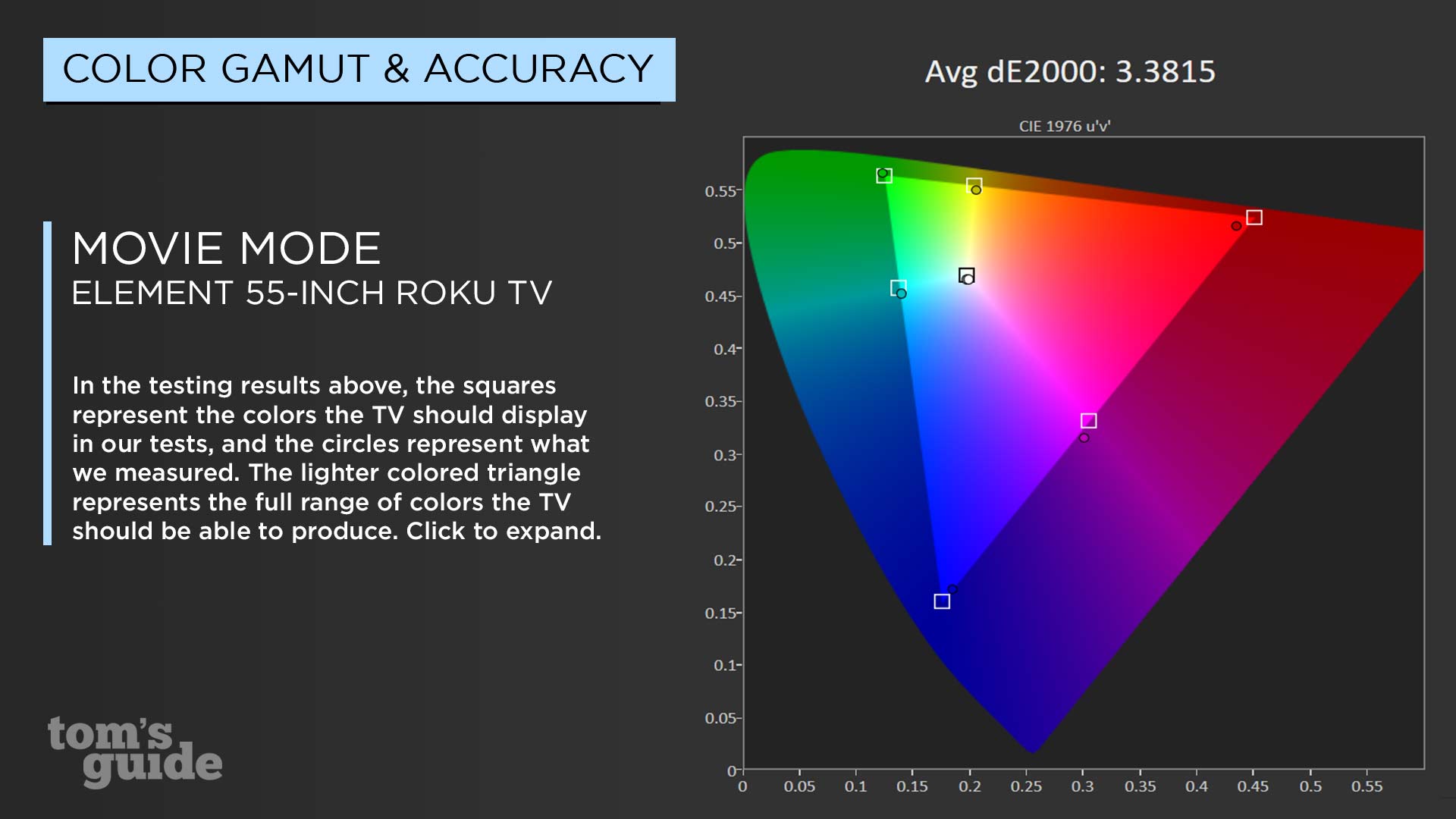
The set did slightly better with accuracy of colors, with a Delta-E rating of 3.4 (closer to zero is better). Although that's not notably good – the similarly priced RCA 65-inch Roku 4K TV and the TCL Roku 49S405 each managed better at 1.6 and 2.1, respectively – it's still a step up from the Toshiba 55-inch Fire TV Edition (5.05). The result is particularly noticeable when displaying blues and reds, and it was easy to see when looking at Spider-Man's suit in scenes from Spider-Man: Homecoming that the colors were just a bit off.
Viewing angles were disappointing. When sitting directly in front of the display, some minor color shifting could be seen out at the right and left edges of the screen. Moving a foot or two to either side of the TV produced a much more dramatic effect. When testing with a solid purple test pattern, the majority of the screen went pink when viewed from a 45-degree angle.
Subtle color variations were also beyond this display's capabilities, with severe banding where only smooth transitions between colors should have been. In an outdoor shot in Blade Runner 2049, a clouded sky looked unnaturally striped, and a fog bank took on a similar posterized look.
MORE: Smart TV FAQ - The Pros and Cons of Smart Televisions
The Element TV was able to connect to our Xbox One X right away, with 4K support and 60Hz frame rates supported automatically. There were some limitations, however, with no support for 10-bit color and no support for HDR10 gaming.
Audio
The Element TV's design takes an unusual approach to the built-in speakers. Whereas most TV designs take into account the reflection of sound off of the table below or wall behind the TV to provide a richer sound experience, the Element uses a pair of reflectors built into the chassis of the TV, similar in some respects to the reflectors used on the Evervue Cosmos outdoor TV.
These reflectors help point the sound toward the front of the TV, where the viewer sits, but it's not aesthetically pleasing, and the sound quality is OK at best. The set also has no subwoofer, resulting in almost nonexistent bass.
MORE: Our Favorite Soundbars for Small and Big TVs
Listening to Phantogram's "Mouthful of Diamonds," the vocals and instrumentals could be heard clearly, but what should have been a throbbing bassline was more like a thready pulse. When watching movies and shows, dialogue was easy to understand and ambient sounds came through with an OK balance, but the lack of low end meant that explosions and other booming sound effects were all fairly muted.
Smart Features
Element uses Roku's tried and true smart-TV platform, which we've always considered solid. While more premium TV manufacturers may use proprietary operating systems, or customized versions of other platforms (such as Sony's use of Android TV), the Roku TV name extends across several manufacturers. That means you'll get pretty much the same Roku experience, whether it's an inexpensive model like the Element Roku TV, or the $1,000 TCL 6-Series.
Whatever model you get, Roku TV has a simple interface that uses big square tiles for apps, streaming services and games. Navigation is simple, and the menu options are mostly identical on every Roku TV. You'll have access to all of Roku's supported apps, including Netflix, Hulu, Amazon Prime Video, HBO Go and Sling.tv.
Roku has added its own channel to provide more free content out of the box. While the quality is what you might expect from a free app, it does give you plenty of content to choose from. This includes some live content, with ABC News, Cheddar and People TV, as well as movies and older TV shows. When we looked, the channel was offering older movies like Pleasantville and Ghost Rider in it's main recommendations, but it has a deep bench of movies to browse through, with comedies like Miss Congeniality 1 & 2, documentaries and a surprisingly wide selection of low-budget action movies. There was some classic TV on there as well, like I Dream of Jeannie, but when I checked to see what was available to watch, I could select episodes only from seasons 1 and 5.
Remote
The Roku remote is a familiar sight to anyone who's used a Roku TV, whether it's from Element or another brand. The small remote looks like an oversize lozenge, with rounded corners and a curved back that's fairly comfortable to hold. The remote has Roku's distinctive purple on black color scheme, with a prominent directional pad for navigating apps and menus, as well as a handful of dedicated buttons for other functions, like media playback, accessing the home screen and settings, and opening the settings menu.
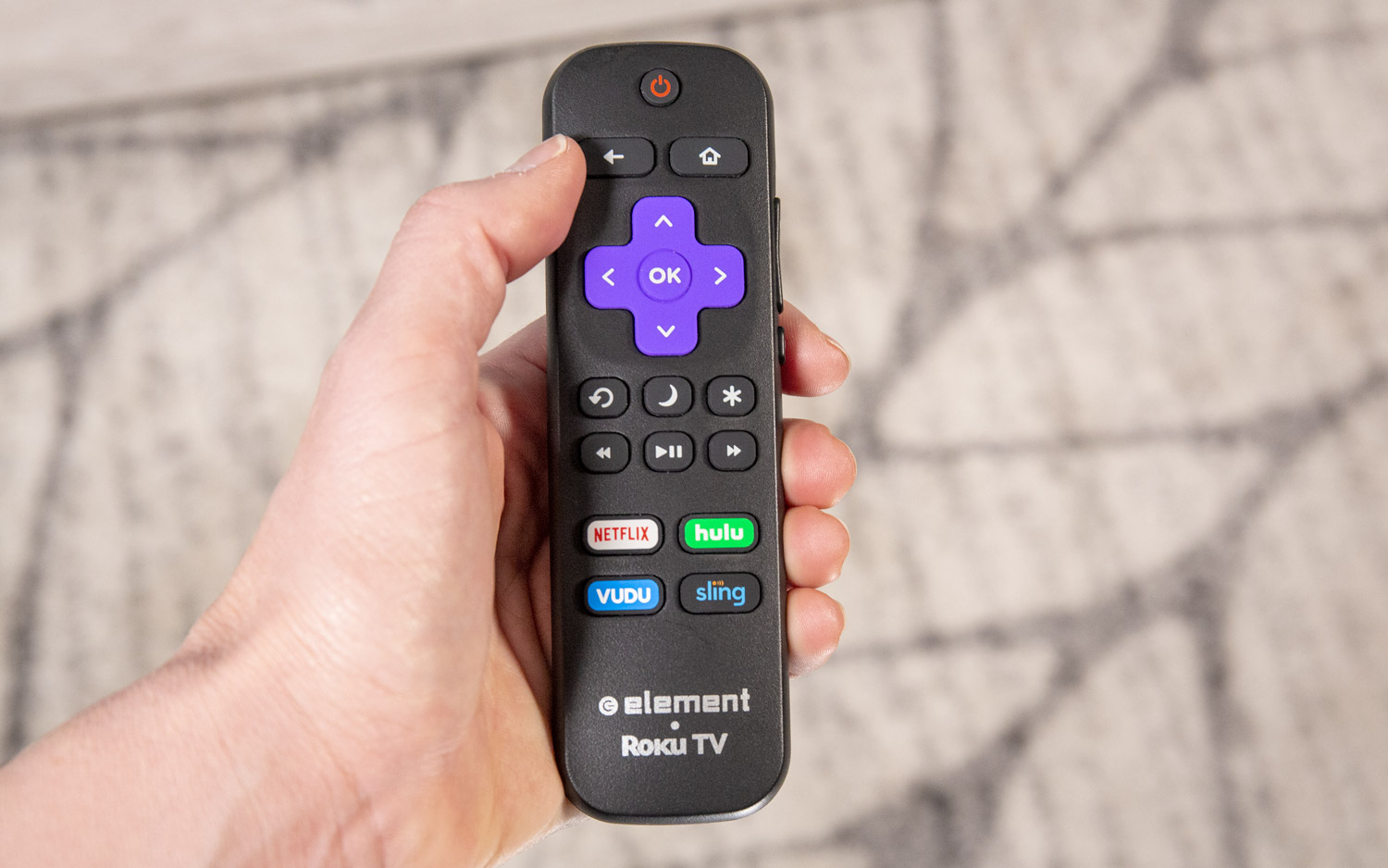
The remote also has dedicated buttons for Netflix, Hulu, Vudu and Sling TV. These are all fairly popular apps, so they're likely to see some use, but we wish it were possible to reprogram them to your own favorites.
The compact Roku remote doesn't have the built-in headphone jack or microphone of the more expensive Roku sets, like the TCL 6 Series, but it offers the same basic functionality. And, those premium features – voice search and private listening – are still available through your smartphone using the Roku app.
Bottom Line
The Element 55-inch Roku TV is a solid option for anyone looking for a truly affordable smart 4K TV. While it's far from perfect, it offers acceptable picture quality, basic HDR support and a solid smart TV experience. You'll have to accept some inaccurate color, and you'll definitely want to buy yourself a soundbar, but the Element Roku TV is a decent-enough TV for its low price.
The Element Roku TV is larger than our favorite sub-$500 smart TV, the 49-inch TCL 49S405 Roku TV, and compared with the recently reviewed Toshiba 55-Inch 4K Fire TV Edition, the 55-inch Element benefits greatly from the tried-and-true Roku interface instead of Amazon's less-polished competitor. If you're on a tight budget, you could definitely do worse.
Credit: Tom's Guide
Brian Westover is currently Lead Analyst, PCs and Hardware at PCMag. Until recently, however, he was Senior Editor at Tom's Guide, where he led the site's TV coverage for several years, reviewing scores of sets and writing about everything from 8K to HDR to HDMI 2.1. He also put his computing knowledge to good use by reviewing many PCs and Mac devices, and also led our router and home networking coverage. Prior to joining Tom's Guide, he wrote for TopTenReviews and PCMag.
